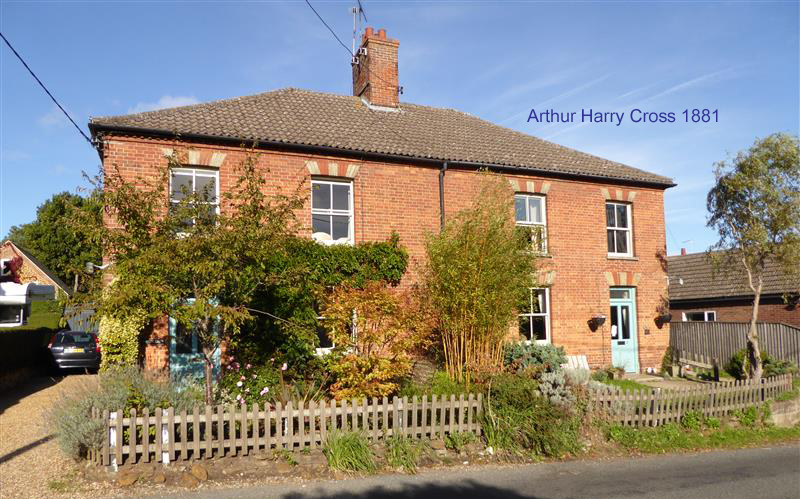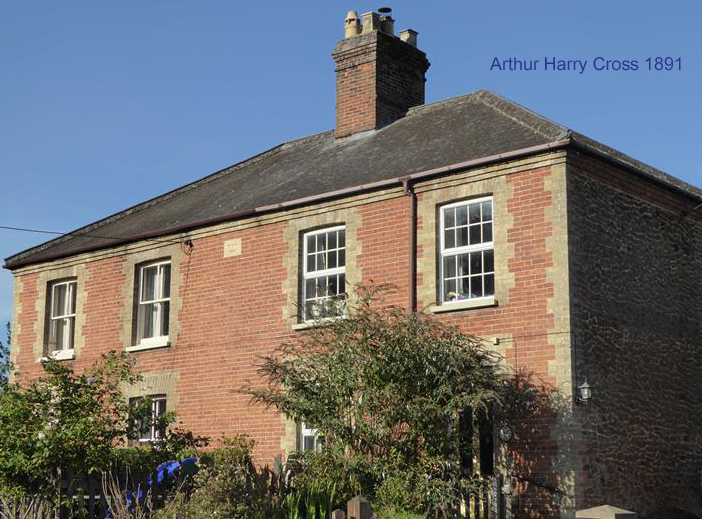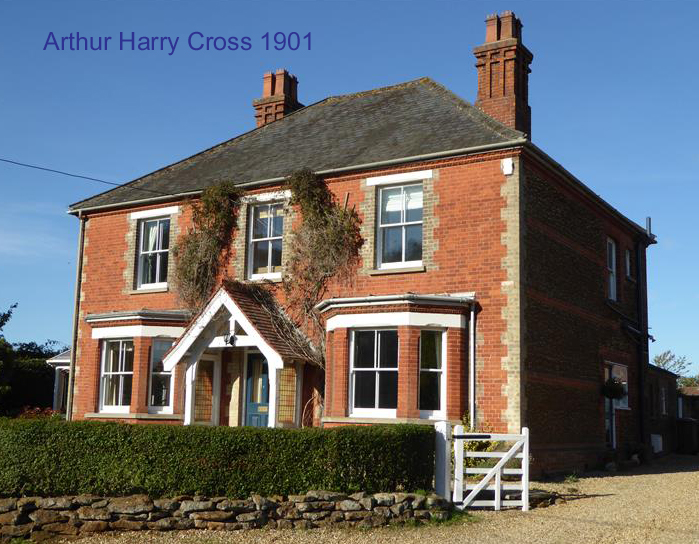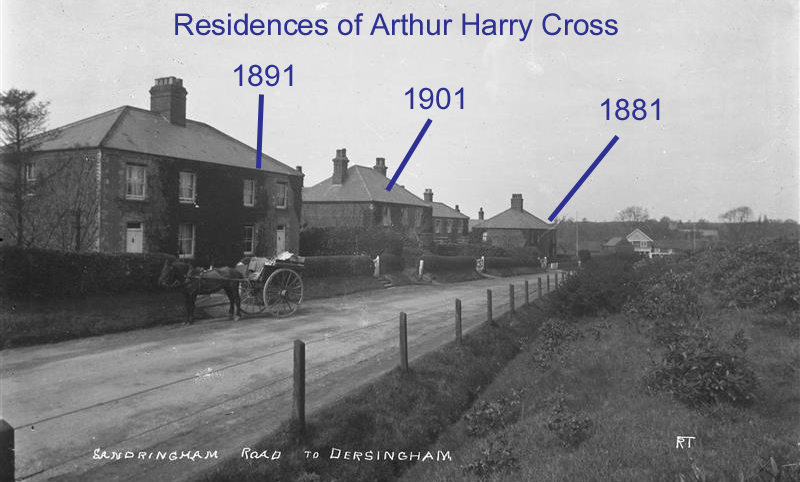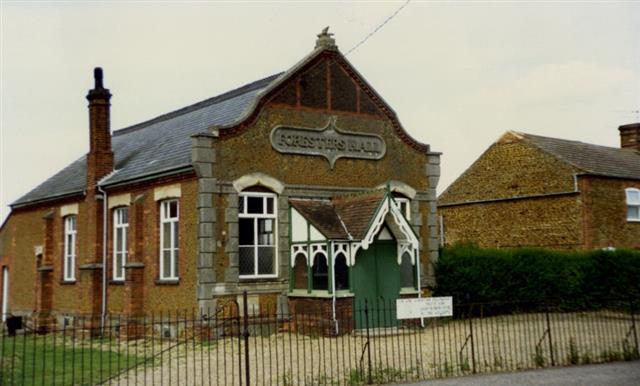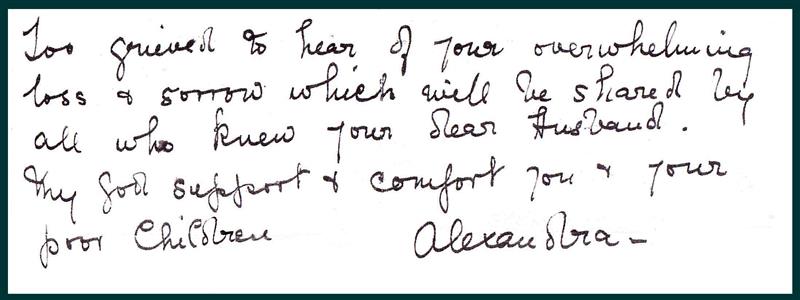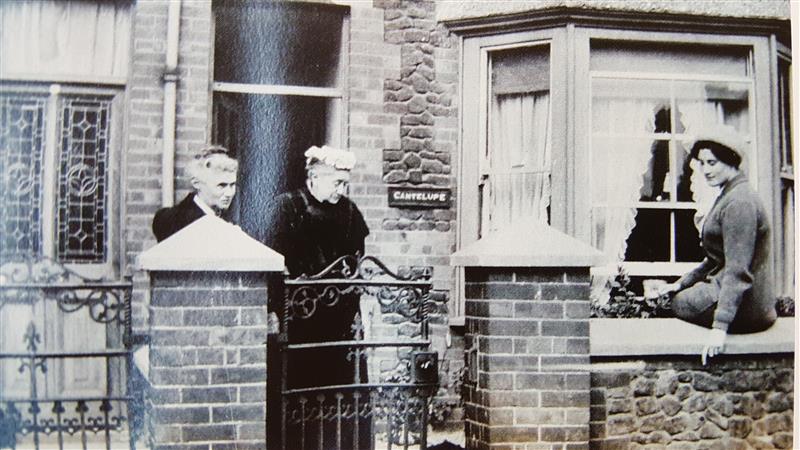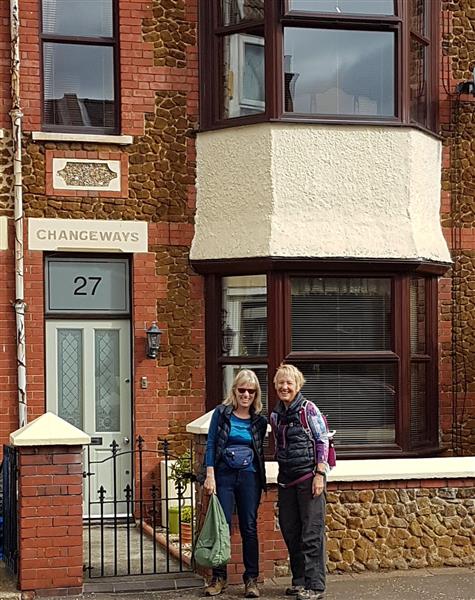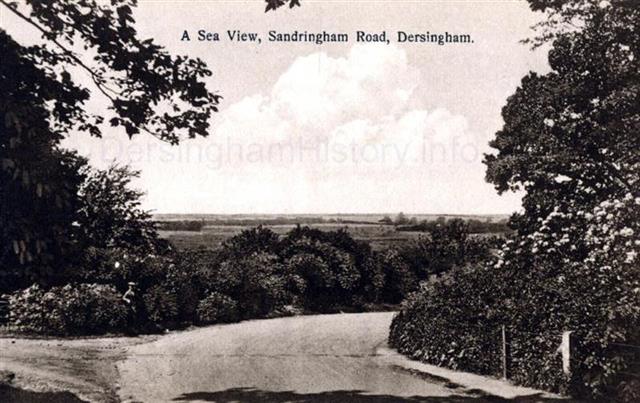He was laid to rest in Sandringham Churchyard where a large attendance of friends came to pay their last tribute as well as several people well known in the musical circles of Norfolk and Cambridgeshire. Their Majesties were represented at the funeral by Mr. & Mrs. Frank Beck and in addition to telegraphing messages of sympathy to the family the King and Queen ordered some beautiful floral tokens to be placed on the coffin. Here is a full transcription of the tribute reported in the Eastern Evening News dated 29th August 1906.
THE LATE MR. A. H. CROSS, A.R.C.O.
INTERMENT AT SANDRINGHAM
Sympathy and regard were in much evidence at Sandringham on Tuesday afternoon when the remains of the late Mr.Arthur H. Cross, A.R.C.O. were interred in the Sandringham Churchyard. Held in the highest esteem, there was a large attendance of friends to pay a last tribute to his memory and several people well known in the musical circles of Norfolk and Cambridgeshire were among those present. The deceased gentleman, who died on Saturday, in his 48th year, at his residence, Cantelupe House, Dersingham, was widely known as the organist and choirmaster at the Sandringham Parish Church. He was also in great request as conductor of various musical ventures, and his services in this respect, always given willingly, and voluntarily, were greatly appreciated. He worked hard and continuously, and it is feared that his enthusiasm for the advancement of music at last affected his health, and brought him to a premature end.. It is a somewhat singular fact that the King, when Prince of Wales, gave him the appointment as organist and choirmaster at the Sandringham Church on August 28th, 1878, that he held it for 28 years, and that he was buried on August 28th, within a few yards of the organ he had played for so many years.
The deceased began his musical career as a chorister boy of Jesus College, Cambridge, where he remained for upwards of eight years. He was gifted with an exceptionally fine voice and in consequence was in great request as a boy vocalist at concerts in all parts of the country. During this period he studied and developed organ and pianoforte playing and general musical culture under Mr.Frederick Dewberry, Mus. Bac. of Cambridge, and at the age of 17 he was holding a church appointment, and deputising at several college chapels. When he was 20 years old the appointment at Sandringham fell vacant , and it was upon the recommendation of the late Dr. G. M. Garrett, then organist to the University and of St John's College, that he secured the post, having qualified as A.R.C.O. in the same year. To his efforts it is due that the choir has been brought to such a high standard of efficiency, and he has, in addition, done much for the improvement of music in West Norfolk. He was highly esteemed by all the members of the Royal family, and during his illness he was attended to, under the instructions of the Queen, by Sir Alan Reeve Manby, M.D. Their Majesties were represented at the funeral by Mr. and Mrs.Frank Beck, and, in addition to telegraphing messages of sympathy to the family, the King and Queen ordered some beautiful floral tokens to be placed on the coffin.
In the absence of the Rev. Canon Hervey, rector of Sandringham, the Rev. Percival Farrar, curate, officiated at the funeral service, and he was assisted by the Revs. J. De Putron (Stowe), E.E. Heseltine (Great Cressingham) and P.C. Stanley (Old Hunstanton), former curates of Sandringham. The chief mourners were the wife and six children of the deceased, Mr. and Mrs. W. H. Cross (brother and sister-in-law, of Cambridge), and Mr. and Mrs. T. Harris-Spencer (sister and brother-in-law of West Bromwich. At the service in the church the choir sang the hymn, "Abide with me" and the 90th Psalm and the Rev. De Putron read the lesson from the 15th Chapter of Paul's Epistle to the Corinthians. At the conclusion of the first portion of the solemnisation Dr. Mann of Cambridge, who presided at the organ, played the "Dead March" in Saul. The final ritual at the graveside was intoned by the Rev. P. Farrar, and the choir sang "Now the labourer's task is o'er". The members of deceased's family carried floral sprays, which they deposited in the grave after the coffin had been lowered. A large wreath of choice flowers, sent by the estate choir children, occupied a portion on a pedestal at the head of the coffin while it remained in the church.
Among the congregation, which crowded the little church were representative tenants and employees on the Sandringham estate, and many people from the towns and villages of West Norfolk. Among them were the Rev. F. A. S. Ffolkes (rector of Wolferton), Rev H. Barratt (Hunstanton), Rev. A. H. Ellerby (Grimston), Rev. J.R. Crawford (East Walton), Rev. F.P. Gilbert (South Wootton), Rev. R.A. Cliff (Hunstanton), representing Miss Cliff Mus. Bac., Mr.G.E. Rose (President), Messrs. G.B. Kendrick and G.R. Oswell (secretaries), Mr.J.R. Pratt and Mrs. Kendrick, and representing the Lynn Musical Society, of which the deceased was hon. conductor: Messrs. Holcombe, Ingleby, J. Jewel and D.S. Page, representing the Lynn and Hunstanton Amateur Operatic Society: Mr.R. Pull, Miss Pull and Miss Clara Kemp, representing the Heacham Choral Society: Miss Andrews and Mr. G. Mallett, representing the Hunstanton Choral Society of which organisation Mr.Cross was also hon. conductor: Mr. C. Ibberson, Mr. W.G. Payne, Mr. H.H. Dow and Miss Clara Dow, Mrs. Monkman, Mr. J.H. Page, Mr. and Mrs. J.T. Jannock and Miss Jannock, Mr. Betts, Mr.G. Baker, Mr. R.A. Wilkin, Mr. Vincent, Mr. G.A. Dines, Mr. J. Rutter, Mr.E.M. Beloe, jun., and many others.
There was a large and beautiful display of wreaths, crosses, harps with broken strings, lyres and other devices. In addition to the family wreath, the president and members of the King's Lynn and Hunstanton Amateur Operatic Society sent a lovely wreath "In affectionate remembrance of our dear friend and hon. musical conductor". "A token of sympathy and great esteem" came from the past and present members of the Dersingham Choral Class; and the Lynn Musical Society sent a magnificent harp. The committee and members of Hunstanton Choral Union contributed a charming device. "With sincere sympathy and deep regret". "With sincere and heartfelt sympathy" was the wording attached to a harp from the council and members of the eastern section of the Incorporated Society of Musicians. Among others were those from Mrs. George Cresswell and Miss Winifred Gurney, Mr. and Mrs.Frank Beck, Mr. and Mrs.Ingram Watson and family, Mr. and Mrs. T.H. Spencer, Mr. and Mrs. Dodman and family , Mrs.Cross (mother), Mr. and Mrs. MacLaren, Mr. and Mrs. Jannock, Mrs. and Miss Smith (Hunstanton), the Rev. P. Farrar, Mr. Richards, Miss Cecil, Dr. and Mrs. Hogg, Mr.Holcombe Ingleby, Mr.Harold Hancock, Rev. and Mrs.Alirs [?] and family, Miss Clara Dow, Mr. E. Wright, Miss Dorothy Blake, Mr. and Mrs.Walter Jones, Mr. and Mrs. Parker, Mr. and Mrs. Cook, Mr. and Mrs.W. Tansley, Mr. and Mrs. Clifton and family, Mr. and Mrs. Wootten (Cambridge), Mr. and Mrs. Dewberry and Agnes (Cambridge), Mr. and Mrs, W.B. Cross, Miss Sergeant [possibly should be Serjeant, a relative of Alice; Mrs. Cross], Miss Parkhouse and Dolly, Mr. and Mrs. Fred Smith Bristol, Miss Cross, Mr. and Mrs. Woodward, Mr. and Mrs. Tingey, Heacham Choral Society, Mrs. Copeland, Miss Watson, Mrs. Porter and Miss Sybil Porter (Roydon), and Mr. and Mrs. Jackson (Sandringham), Canon and Mrs. Harvey, Rev. and Mrs. Corbould Warren, Dr. and Mrs. Mann, Mr. and Mrs. Walker (Sandringham), Mr. R.A. Wilkin, Hillington and Congham Choral Class, Mr. and Mrs. Bryant, Mr. Miss and Dorothy Rowell, Mr. and Mrs. G.R. Kendrick and the Grimston and Royden Choral Class.
As can be seen many prominent Dersingham villagers attended including Mr.& Mrs. Jannoch from The Lily Nursery, the Rev. & Mrs. Corbould Warren our vicar, Mr. & Mrs. Parker from the Grocery and Drapery Store at the bottom of Sandringham Hill, Mr. & Mrs. Tingey from Manor Farm, Mr. Dodman, blacksmith, and his wife, Mr. Ernest Bryant, who had taken part in many of Arthur's concerts, and Arthur's landlady Mrs. Copeland in 1881 were just a few among the large congregation.
Arthur was laid to rest here in the in the Sandringham Churchyard.


